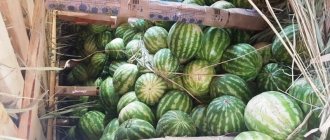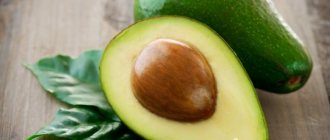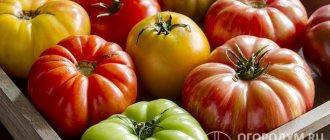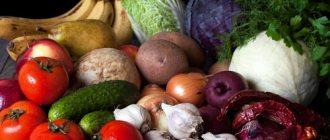Having grown and harvested tomatoes, you want to fully enjoy the result of your labors. However, storing green tomatoes requires a clear understanding of why you are doing it. After all, preserving unripe fruits for a long time, without losing taste, is not easy, since man has not yet fully mastered the mysteries of nature.
When figuring out how to store green tomatoes so that they turn red quickly, and how to delay this process, you will have to delve into complex biochemical reactions.
Purposes of tomato storage
Having collected the crop and delivered it to the place of processing and storage, you need to decide on the following points:
- Should the crop be stored for quick reddening and further processing of tomatoes for the winter, when they can be pickled, pickled, canned, processed into tomato paste, and simply consumed fresh, in salads.
- Either store the tomatoes until the New Year or almost until, but the longer the better.
How to preserve the fruits will depend on which path you choose, so that it is done correctly, competently and with the least loss for the quantity and quality of the product.
Do you know that…
Tomatoes can ripen in a week, or you can stretch out this process for a couple of months. Everything depends on the created conditions.
Which tomatoes to choose for storage. Varieties and when to collect?
It is recommended to harvest tomatoes when they are not ripe.
The first mature tomato produced by domestic breeders is Giraffe. The variety has large yellow spherical fruits with a strong skin.
It is recommended to harvest tomatoes when they are not ripe, as they will last up to six months. In order for the fruits to ripen faster, you need to place blanje tomatoes next to them in the box.
Storage varieties:
- Red stone is a dense, medium-sized fruit.
- Decembrist is large (weighs 250 g), the skin is pink.
- Lond keeper - ripe fruits of pearl pink color, stored until the New Year holidays.
- Masterpiece - yellow-orange fruits.
Read more ► How to prepare and preserve green onions for the winter: classic and modern recipes
The specially bred, easy-growing variety New Year's, ripens by winter. The fruit is flat-round, yellow, weighing 100 g; leaf, stipule of unusual shape - large, lobed, externally different from other varieties.
Unripe fruits grown in a greenhouse can be stored for up to six months.
Important! The harvest of mature varieties is harvested late, those grown in a greenhouse - in October-November.
Harvesting and sorting
Whatever your goal, the event will be successful if:
- tomatoes are collected in a timely manner, without waiting for the time when frost covers the fruits or they undergo frost treatment;
- vegetables collected are of good quality, not blackened by late blight fungus, not damaged (nailed, crushed);
- A dry day was chosen for collection rather than a wet morning.
Since when harvesting there is no time to examine the degree of ripeness and beauty of the circles, when storing at home you need to pay attention to these parameters.
Sorting by degree of maturity must be carried out, since the biochemical processes that have begun cannot be reversed.
So we have:
- green tomatoes;
- beginning to turn brown;
- brown;
- red.
They need to be sorted and the sooner the better. Use reddened ripe ones for immediate processing; there are many methods for this:
- canning;
- pickling;
- drying;
- freezing;
- processing for tomato products.
Brown tomatoes will be first in line for processing when they turn red.
We recommend reading: Ripe tomatoes: how to keep them fresh and process them for the winter.
Varietal features
An important point for conservation is the choice of variety. It is a mistaken belief that any variety can be stored for a long time. Before you set the goal of enjoying your own tomatoes for the New Year holidays, understand the variety of varieties, otherwise you will fail.
An event is doomed to failure if:
- when choosing a variety, you did not pay attention to such an indicator as “keeping quality”;
- the beds have become re-sorted;
- During harvest, tomatoes of different varieties were mixed.
If you don’t know what type of fruit you want to preserve, it’s better not to do this, because a tomato that ripens for a long time is tasteless. Even if it is dense and seemingly beautiful, it has an unpleasant smell, taste and a disgusting aftertaste.
Green tomatoes contain solanine, a poisonous alkaloid that gives them an unpleasant taste. Its concentration decreases after fruit ripening or during culinary processing (pickling, fermentation, salting)
It’s a completely different matter when the tomatoes, set to ripen, ripen quickly, and then are processed into amazing preparations that will decorate any holiday table and prove to everyone that you are an excellent housewife. [flat_ab id=”24"]
Do you know that…
A whole army of breeders is working to create tomatoes that last longer and become tastier, sweeter, and more aromatic over time.
How to store tomatoes so they ripen quickly
There is a direct relationship between temperature indicators and the rate of ripening of tomatoes:
- the warmer it is, the faster the ripening;
- the lower the temperature, the slower the ripening.
Naturally, no one will walk around boxes of tomatoes with a thermometer. Everything is done simply:
- Tomatoes are placed in boxes.
- They cover themselves with a towel, rags, even newspapers, as long as bright sunlight does not fall on them.
- The boxes are installed in a warm (with a temperature of about 20 ° C) room in the house.
Where can I find such a place? The kitchen is where products belong.
Do you know that…
Fruits sent for ripening must be of normal size for their variety. Small and underdeveloped ones will not be able to keep up.
How to keep tomatoes longer
If you still decide to save green tomatoes longer, then:
- keep them in a cool place (temperature around 13 °C);
- constantly sort out and put aside those that are beginning to turn brown;
- periodically select and discard those that have begun to turn black.
Where to store these tomatoes:
- a small amount - in the refrigerator;
- the big one is in the basement.
Do you know that…
Whatever storage method you choose, if the tomatoes turn black, there is no point in storing them any longer. Moreover, such tomatoes should not be processed.
Why tomatoes don’t have time to ripen on the vine
Harvesting green tomatoes is a necessary measure that allows you to save the much-desired harvest. But why do we have to face such a situation every autumn? There may be several reasons for prolonged and untimely ripening:
- Wrong choice of variety. For growing outdoors, you should prefer early-ripening varieties of low- or medium-sized tomatoes. In this case, the plant will not spend a lot of time growing green mass and will form ovaries in a timely manner. Tall varieties of tomatoes can be grown in greenhouses, where optimal temperatures are artificially maintained until mid-autumn.
- Violation of plant care rules. In order for tomatoes to ripen quickly on the root, you need to properly shape the plants by removing the stepsons and pinching the tops. At the end of the fruiting season, it is recommended to feed tomatoes with potassium fertilizers, reducing the amount of nitrogen to a minimum.
- Late planting of seedlings.
- Lack of sunlight. The reason may be caused by bad summer weather and in this case it is almost impossible to correct the situation. It’s another matter when tomatoes grow near tall bushes and trees. In this case, you can facilitate the penetration of sunlight into the tomatoes, which will speed up their ripening.
- Early arrival of autumn cold.
Unfortunately, the farmer can influence only some of the above reasons, but if there is such a possibility, then next year you should definitely try to eliminate past mistakes and be more careful in choosing a variety, growing location, and timing of sowing seeds for seedlings. Perhaps in this case it will be possible to collect a mature harvest in full from the garden.
Important! Ripening of standing tomatoes occurs at a temperature not lower than +150C.
Myths and reality
If you wander around the Internet, you can read a lot, but each line is worth thinking about:
- “To ripen, tomatoes must be covered with a red cloth.” This is probably outright quackery, although if you want to have your own opinion on this matter, then try it. It is advisable, of course, to keep the experiment clean and cover one box with a red rag and the other, for example, with a green one. And please share your research results in the comments.
- Mustard powder also does not help ripening. If the tomatoes have turned black, it won’t help either.
But it’s true that when you add a ripe apple or one that’s starting to rot to green tomatoes, unripe tomatoes ripen faster.
To speed up ripening, you can also add overripe bananas or pears to green tomatoes.
Do you know what ripe fruits smell like? That's right - delicious. They smell like ethylene with aromatic substances. The riper the fruit, the more gas it releases and contributes to the redness of its neighbors.
Do you know that…
At the beginning of the last century (1936), a work was published at the Peterhof Biological Institute on the effect of ethanol (medicinal alcohol) on stored tomatoes. So, when 0.2 ml of vodka was introduced into the pulp of a tomato, first the injection site began to turn red, and then the fruit itself, and evenly. This did not affect the taste.
Ripening of “drunk” tomatoes takes place 10-12 days earlier than “sober” ones. Another interesting fact is that “drunken” tomatoes produce seeds with excellent seedlings.
Why accelerate maturation?
Accelerating the ripening of tomatoes helps preserve the harvest. At the end of summer, significant temperature changes begin. It is often hot during the day and cold at night. If the tomatoes do not have time to ripen by this time, they will remain green or brown until frost. This threatens crop loss.
Suitable for everyone: 4 myths about black clothing that are imposed on women
Poems and pies will always help lift your spirits: “And Nikolai is filled with song”
Varnish, metal, perforation: trendy shoes for mid-spring 2021
In addition, at the end of August, due to temperature fluctuations, moisture begins to accumulate on tomato leaves. This promotes the development of fungi and bacteria. The plant can get a dangerous fungal infection - late blight. This disease can destroy not only unripe fruits, but also the entire bush.
To prevent such losses, it is necessary to speed up the ripening of tomatoes. This will allow you to harvest before frost sets in.
Tomato processing
If it is not possible to keep tomatoes fresh for a long time at home, they are processed. Recipes for all kinds of preparations can be found for both red and brown and green tomatoes.
Preparing tomatoes for the winter using a proven recipe is not difficult. Or you can experiment and dry it, roll it with mustard, and process it into sauces and salads.
Try preparing a very tasty salad for the winter using the recipe from this video:
Many factors influence how to store tomatoes at home. However, you will be able to extend the shelf life of this wonderful vegetable and enjoy eating it in fresh and processed form.
Store correctly and be healthy!
At what temperature
How to store green tomatoes so that they turn red: for long-term storage (until January), picked vegetables need a stable temperature range of +10 to +12 degrees and humidity within 80-85%.
Excessive dry air will lead to wrinkled and flabby fruits. To prevent vegetables from spoiling for a long time, they need to be protected from sunlight.
Experienced gardeners use the following tricks:
Important! When the ripening process accelerates, a dense area with a yellow-green tint remains around the stalk of vegetables. As a result, the fruits are soft and have a minimum shelf life; they need to be consumed as quickly as possible.










